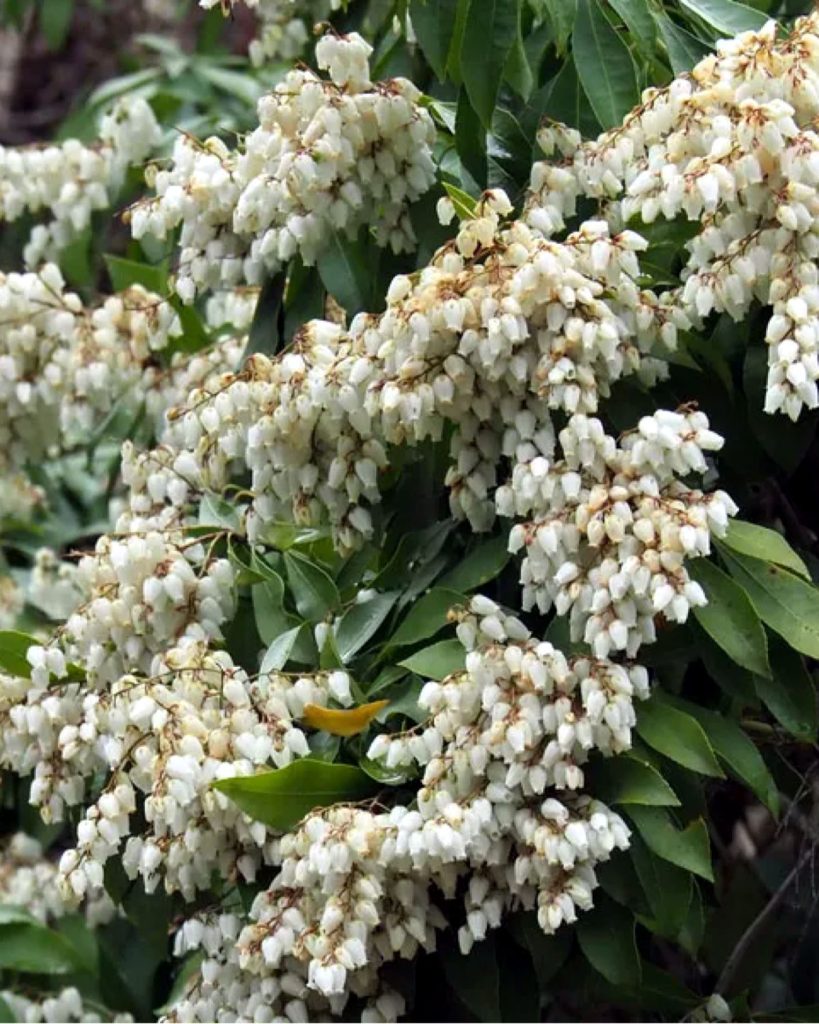
Asebi(the azaleas) are in full bloom on Tobihino, located within the grounds of Kasuga Grand Shrine in Nara Park. Until late February, the park held the traditional “Shika-yose(deer gathering)” event, where the sound of natural horns would attract a large group of deer from the forest. Asebi begins to bloom around the same time. Known and loved since the Manyo period, the Asebi’s poem “My love is like the flowers of the mountain, now in full bloom” is accompanied by white or pale pink vase-shaped flowers. The plant contains a toxic component called “grayanotoxin” in its branches and leaves, which causes horses to become intoxicated and lose their footing when consumed, hence the name “馬酔木(the horse drunk tree)” in Chinese characters.
奈良公園内、春日大社境内地の飛火野(とびひの)は馬酔木(あせび)が満開です。その飛火野では、冬の風物詩になっている「鹿寄せ」が2月下旬まで開催されました。ナチュラルホルンを吹き始めると、その音色に誘われ、森の奥からたくさんの鹿たちが集まって来ます。馬酔木はその頃から咲き始めます。「わが背子に わが恋ふらくは 奥山のあしびの花の 今盛りなり」 と万葉の昔から親しまれた馬酔木は、白色や薄紅色の壷形の花をいっぱい咲かせます。枝葉に「アセボチン」という 有毒成分を含んでいて、馬がこれを食べると 酔って足がなえることから 漢字の「馬酔木」がその名に当てられたそうです。
